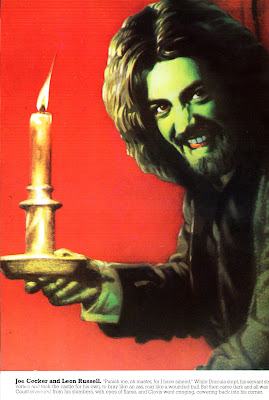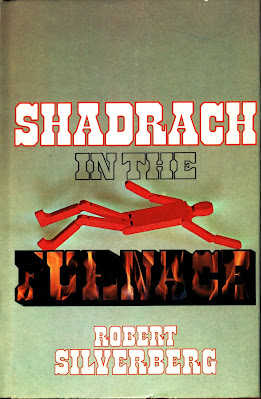Wednesday, April 10, 2024
Suburban Grindhouse
Sunday, April 7, 2024
Greatest Science Fiction Hits by Neil Norman
by Neil Norman
Thursday, April 4, 2024
Book Review: The Ice Monkey
Monday, April 1, 2024
National Lampoon April 1981
Friday, March 29, 2024
Book Review: A Nice Place to Live
The trade version features some groovy gold-colored highlights
on the front cover, certainly in keeping with the Paperbacks from Hell
aesthetic !
A sequel, titled ‘The Vengeance’, was issued in 1983 by
Random House.
I couldn't find much information about author Robert C. Sloane, so I don't know if he is 'real', or a pseudonym.
'A Nice Place to Live' is set in the early 1980s. The protagonists are Nick and Christine Marino, the kind of young and photogenic couple who like to look deeply into each other’s eyes, and whisper sexy remarks.
[ Yeah……… we’re already rooting for the monster(s) ! ]
Nick and Christine recently have moved into the village of Mill Harbor on the north shore of Long Island. It’s an idyllic place to live, although the neighbors are a little eccentric, even threatening. Karl Anderson, a brutish and unpleasant man, is fixated on Christine, while Bowen Stirner, an anthropologist, also signals he wants to be more than just friends with her. And Karl Anderson's daughter Karla, a stunning blonde, has clear intentions towards Nick.
I won’t divulge any spoilers (although the fact that there is a sequel has its implications). Sufficient to say that ‘A Nice Place
to Live’ is akin to many Paperbacks from Hell that deploy the well-worn trope
of a couple moving into a seemingly wonderful place, only to find it steeped in
EVIL !!!!!!!!!! (such as, for example, ‘Harvest Home’ by Thomas Tryon, or ‘New
Blood’ by Richard Salem). More than a few of such titles are duds, mainly because the slowly unfurling malevolence turns out, in the end, to be underwhelming.
In 'Nice Place', however, author Sloane keeps the reader
off-balance with some plot twists and turns. And in place of the traditional
tropes of ghosts, or vague occult phenomena, he introduces some genuinely disturbing adversaries, whose depredations benefit from Splatterpunk shadings.
Where the novel slips from Five-Star to Four-Star territory is in the climax, which goes on too long, and features stereotypical 'bwah ha ha !' speeches from the villains. The sort of speeches that are designed to give our heroes, trapped in a lethal predicament, those precious additional seconds to try and come up with a winning strategy............
Summing up, if you want a better-than average Paperback from Hell, that is a short and engaging read, then ‘A Nice Place to Live’ will satisfy.
Monday, March 25, 2024
Book Review: Kingdoms of the Wall
Book Review: 'Kingdoms of the Wall' by Robert Silverberg
3 / 5 StarsFriday, March 22, 2024
Rock Dreams
Nik Cohn's captions are a mixed bag. Some simply are fatuous (Gene Vincent is like a 'maimed black leather animal'), while others, such as Crosby, Stills, Nash, and Young ('Highway songs full of light and space' ) ably complement the artwork.
Tuesday, March 19, 2024
Beautiful City
from the movie Godspell (1973)















































































